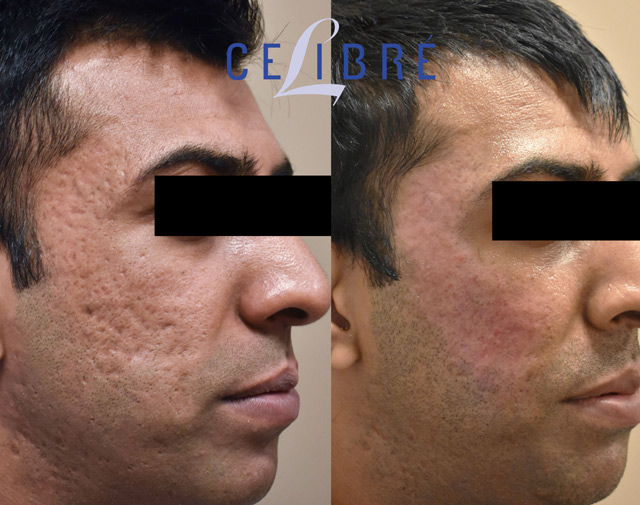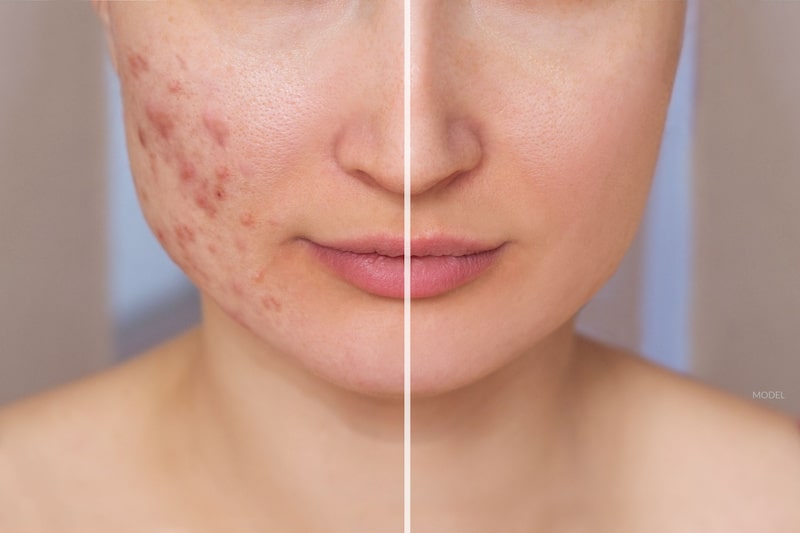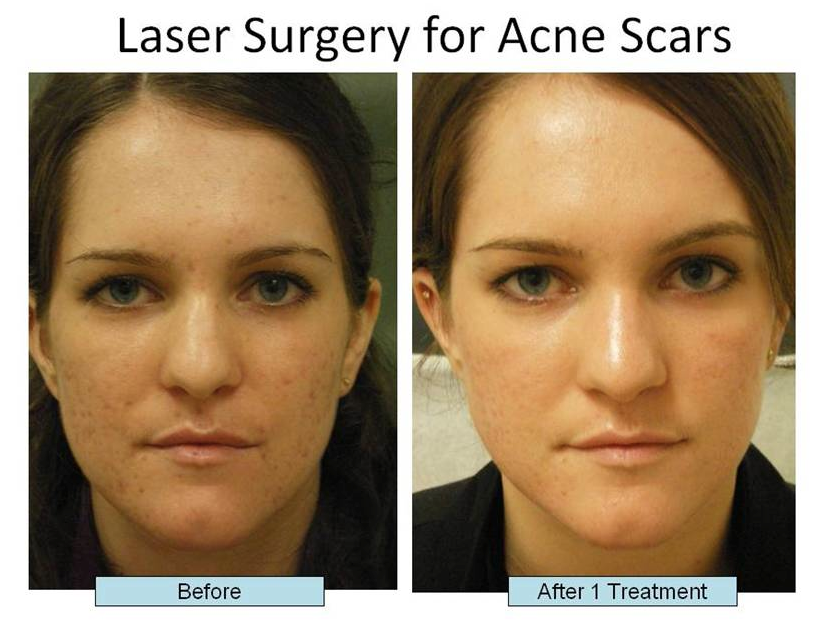Effective Solutions for Acne Scars: How to Attain Clearer Skin
Effective Solutions for Acne Scars: How to Attain Clearer Skin
Blog Article
Comprehending the Numerous Skin Disease and Effective Treatment Alternatives for Acne Scars
Acne marks represent an intricate interaction of skin problems that dramatically influence people' self-worth and total skin wellness. As we discover the landscape of acne mark monitoring, it comes to be noticeable that the trip toward clearer skin may involve even more than simply topical remedies.
Kinds Of Acne Marks

On the other hand, hypertrophic marks result from an overflow of collagen throughout the healing procedure, resulting in elevated areas on the skin. These scars are usually solid and can differ in shade, in some cases showing up red or darker than the bordering skin.
Understanding these kinds of acne marks is crucial for establishing a reliable treatment plan - skin rejuvenation treatments. Options may consist of chemical peels, laser treatment, microneedling, or facial fillers, tailored to the certain mark kind. An extensive appointment with a dermatologist can assist figure out one of the most appropriate intervention, considering the person's skin type, scar seriousness, and total skin wellness
Causes of Acne Scarring
Scarring happens as an outcome of the body's natural recovery action to swelling and injury caused by acne lesions. When acne kinds, it sets off an inflammatory action, bring about the launch of different cytokines and development aspects that advertise recovery. Nevertheless, this procedure can often cause too much cells formation or insufficient repair work, leading to scars.
The key root causes of acne scarring include the seriousness of the acne itself, duration of the lesions, and specific skin kinds. Serious inflammatory acne, such as cysts and nodules, is much more most likely to lead to scarring due to deeper cells damages. Furthermore, improper handling of acne sores, such as squeezing or selecting, can worsen tissue injury and swelling, raising the likelihood of scarring.
Hereditary proneness likewise plays a considerable role; people with a household history of scarring go to a greater risk. Skin type and shade can influence scar development, as darker skin tones may experience post-inflammatory hyperpigmentation, while lighter skin might develop atrophic marks.
Inevitably, comprehending these causes is important in taking care of acne and alleviating the capacity for scarring.

Therapy Options for Scarring
Effective treatment alternatives for acne scarring differ depending upon the type and severity of the marks. Typically categorized right into atrophic, hypertrophic, and keloid scars, these problems need tailored strategies for ideal results.
For atrophic marks, which are defined by a loss of tissue, therapies such as chemical peels, microdermabrasion, and laser treatment are generally employed. These approaches advertise skin renewal and promote collagen manufacturing, thereby boosting skin texture. Subcision, a minimally invasive procedure, can additionally work by separating fibrous bands beneath the skin.
Hypertrophic and keloid scars can be much more challenging informative post to treat. Alternatives include corticosteroid shots to reduce swelling and flatten the marks. In many cases, cryotherapy or laser therapy may be recommended to decrease their appearance.
Surgical choices are readily available for severe scarring, where excision or skin grafting may be essential. It's crucial for individuals to seek advice from a skin doctor to analyze their certain mark type and go over one of the most appropriate treatment plan. Combining multiple therapies usually produces the ideal results, making sure that each person's distinct skin disease is resolved efficiently.
Natural Home Remedy and All-natural Solutions
All-natural remedies and home remedies can give an available technique for individuals looking for to boost the look of acne marks (acne and acne scars treatment). Various ingredients located in the home kitchen area have actually demonstrated possible benefits in improving skin appearance and advertising healing

Another effective option is lemon juice, which acts as an all-natural exfoliant and can lighten hyperpigmentation. It needs to be utilized carefully, as it might create photosensitivity. Oat meal masks are additionally useful; their gentle exfoliation can assist remove dead skin cells while soothing irritability.
Vital oils, such as tea tree oil and lavender oil, can even more sustain scar recovery as a result of their antimicrobial homes. It is vital to perform a patch test before applying any type of treatment to ensure there are no unfavorable reactions. These natural services can be a corresponding approach in the journey to decrease acne scars.
Protecting Against Future Scarring
Adopting a proactive method to skin care can considerably reduce the threat of creating future acne scars. One of the key techniques is to manage acne effectively as it occurs. This includes using non-comedogenic skincare products and medications suggested by skin doctors that target acne without irritating the skin. Regular cleansing, exfoliation, and hydration can help preserve skin health and protect against stopped up pores.
In addition, staying clear of the lure to squeeze or select acne lesions is vital, as this can bring about inflammation and subsequent scarring. Instead, individuals ought to concentrate on applying topical therapies that promote recovery and minimize inflammation. Ingredients such as salicylic acid, benzoyl peroxide, and retinoids are understood for their efficacy in handling acne and decreasing scars.
Sun find more info security is another essential element; direct exposure to UV rays can hinder and darken scars recovery. Consequently, making use of a broad-spectrum sunscreen daily can reduce these effects - skin rejuvenation treatments.
Last but not least, preserving a healthy and balanced diet abundant in anti-oxidants and staying hydrated assistances skin regrowth. By executing these safety nets, individuals can considerably lower their risk of future scarring and advertise overall skin health.
Final Thought
In conclusion, a comprehensive understanding of acne marks, including both hypertrophic and atrophic kinds, is necessary for reliable therapy methods. Consultation with a dermatologist stays imperative to design personalized approaches that think about specific skin kinds and scar intensity, inevitably improving the effectiveness of mark administration techniques.
Acne scars represent an intricate interplay of skin conditions that substantially impact people' self-esteem and overall skin health and wellness. The 2 primary classifications of acne marks are hypertrophic and atrophic scars. These marks are more identified into 3 subtypes: ice choice marks, which are deep and narrow; boxcar scars, which are wider and have well-defined sides; and rolling scars, which produce a wave-like appearance due to uneven skin appearance.
A thorough consultation with a skin specialist can aid establish the most suitable intervention, taking into account the person's skin type, mark severity, and general skin wellness.
Assessment with a skin specialist continues to be vital to develop personalized approaches that consider specific skin kinds and scar intensity, ultimately enhancing the efficiency of scar management strategies.
Report this page